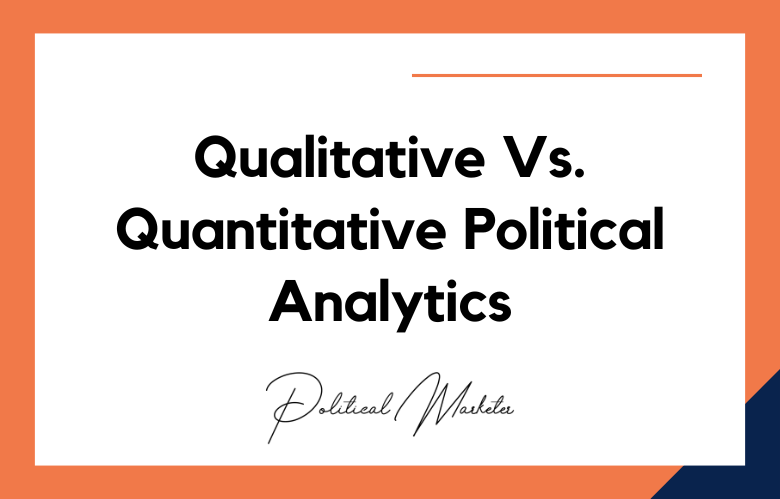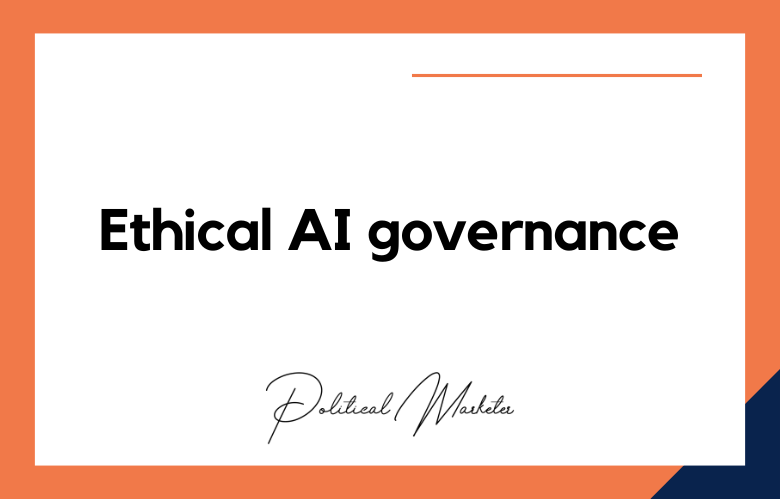Political Microtargeting: Political advertising has come a long way since the days of just using traditional print media to reach voters. Nowadays, political ads are all over the internet, including Facebook, Twitter, and YouTube.
Politicians can use online tools like Facebook’s “Ad Manager” or Google’s “Display Network” to create an ad targeting specific groups of people who share common interests so they see your message.
It will give you tips for creating successful campaigns on social media sites like Instagram and Snapchat.
After reading this post, you’ll know exactly what it takes to be a successful politician when advertising your campaign online!
The only thing more frustrating than getting your news from Facebook is seeing all the ads that come with it. You know, those pesky little red boxes that pop up at the bottom of your screen occasionally? It’s time to get rid of them! With this article, you’ll learn how easy it can be to avoid these irritating ads by using online political advertising and micro-targeting. So go ahead- read on!
What is Political Microtargeting?
Political microtargeting uses data to identify, persuade, and turn out voters. The most sophisticated practitioners have replaced many voter contact activities with digital tactics that are more efficient or simply better at changing minds.
Political microtargeting is the practice of using aggregated data to determine which people are more likely to vote.
Political Microtargeting uses big data and algorithms to identify, persuade, and mobilize voters.
Political microtargeting is the process of using advanced data analysis to identify individual voters who are most likely to support a given candidate and then delivering political messages tailored to those specific individuals.
Political microtargeting is the practice of analyzing voter data to predict how each individual or household will vote.
Is Online Political Microtargeting a threat to democracy?
The use of online political microtargeting is a threat to democracy.
If you think microtargeting threatens democracy, then I’m with you. That’s why we should vote next month instead of later in the year.
Online Political Microtargeting is a threat to democracy.
No, it isn’t because the growing use of microtargeting allows politicians to engage more people intelligently.
How does political microtargeting work?
By combining information about a person’s party affiliation, voting history, and demographic profile with data from public records and social media sites, campaigns can quickly identify voters most likely to support them.
Many political campaigns use digital tools to “micro-target” voters by analyzing databases of voter history, consumer data, and online histories. These microtargeting efforts are based on psychological insight into how small voters can be persuaded by narrowly targeted messages.
First, a company collects data about the individual. Then, they use that information to target political advertisements.
Microtargeting is the practice of delivering specific political messages to small groups of voters. This can be done through door-to-door canvassing, phone calls, or ads on social media.
Simply put, microtargeting is a form of advertising on the internet that uses data to send advertisements to specific groups and people.
Defining the issue of Political Micro-Targeting
The issue of political micro-targeting is a topic that I am interested in. It has to do with politicians’ increasing use of digital media to reach out and influence voters.
Political micro-targeting is when political parties target specific groups through digital ads to convince them to vote for one party.
The issue of political microtargeting concerns the privacy of citizens.
Political micro-targeting has been a topic of conversation in the media and on social networks since it was discovered that Cambridge Analytica acquired data from 50 million Facebook users. The primary concern is privacy, specifically that this information could be used to manipulate.
Understanding the opportunities and risks of Political Micro-Targeting
The use of micro-targeting in political campaigns has become increasingly common. While this may increase emphasis on specific issues, it also presents possible negative consequences for the election process.
If you’re interested in Political Micro-Targeting, I recommend reading Martin Lindstrom’s article. It provides a good overview of the opportunities and risks involved with the practice.
Political Micro-Targeting is a novel way of intervening in the political landscape. It represents new possibilities and risks for an individual or group that employs this strategy.
Political micro-targeting is a strategy political campaigners use to reach all the people they want to persuade.
A new technology called micro-targeting has been introduced in political campaigns.
Privacy and Data Protection Rules for Political Micro-Targeting
Did you know that privacy rules are changing in the UK? Politicians are now forbidden to use personal information for political purposes. They want people to feel safe when sharing their thoughts on social media.
Privacy and data protection rules are essential when it comes to political micro-targeting.
No rules were protecting the privacy of data for political micro-targeting.
Political Micro-Targeting in Data-Driven Democracies
Political micro-targeting in data-driven democracies is the ability of political parties to collect information on voters and serve them with highly customized campaign messages.
Data-driven political advertisement is a controversial topic. It can also prove very effective in delivering said advertisements to the target audience.
If we can identify risk-averse personalities, they tend to make more conservative choices.
Political Micro-targeting in data-driven democracies is a phenomenon that has grown over the last decade. It refers to the increasingly fine-grained analysis of people’s political views and how they can be used strategically when trying to influence.
Regulatory approaches for political micro-targeting
When political candidates use micro-targeting techniques to motivate their base, it increases the likelihood of winning elections and reduces the overall cost.
Political micro-targeting has become a controversial issue in the last decade.
Before I start, let me say the most important thing to remember is that if you are concerned about privacy issues with political micro-targeting, then there are regulatory approaches you can take.
Political Micro-Targeting as a Political Speech
Political micro-targeting is good for politics because it gives you the power to find out who your voters are.
Political micro-targeting is a way to focus on specific individuals with political messages. Today, it is at its most advanced level.
One of the best examples of political micro-targeting I’ve seen is the Democratic National Committee. They’re targeting voters based on their demographics and interests, making political campaigns more effective.
The future of political microtargeting
Political microtargeting influences voters to go to the polls on election day. This is done by targeting specific groups of people, especially undecided ones.
I think the future of political microtargeting is to develop a system that allows politicians to target their more extensive base with specific messaging aimed at each.
Data and computing power are what make political microtargeting possible. The more data you have, the better your results will be.
There is no question that political microtargeting is in its infancy. It will take the nation’s best data scientists, economists, and statisticians to continue making it more accurate.
The future of political microtargeting will be using social media to reach out to target voters, using their content preferences against them.z
Political Micro-Targeting Advantages
- Know who your target audience is
- Create a campaign that speaks to their concerns and interests
- Use online ads, social media, email campaigns, or other digital marketing tools to reach them
- The ability to get a specific demographic
- Get people involved in the movement who might not have been otherwise
- Keep your message consistent and focused
- Micro-targeting allows you to reach particular groups of people
- It is a more efficient way to get your target audience
- You can create ads that speak directly to the needs and interests of your voters rather than trying to appeal to a broad demographic
- The data collected from micro-targeted ads have been shown as being 95% more effective at getting people out on election day.
- Micro-targeting allows advertisers to target specific audiences
- It’s a way for politicians to reach out to voters who are most likely to support them
- The more information that can be gathered about an individual, the better they can be targeted
- Technology has made it easier for politicians to target specific groups of people
- This allows them to tailor their message and reach out to more voters than ever before
- It also means that they can spend less money on ads because they don’t need as many people to see the ad
Conclusion
Online political advertising and microtargeting can be excellent ways to reach your audiences effectively. When you’re unsure what these terms mean, don’t worry—we have the definitions below. Want help getting started? Contact our team of experts today!
We offer consulting services in campaign management, digital marketing strategy, web design/development, content development, and other related areas that will make it easier for you to get ahead of your competitors with less effort or money spent on trial-and-error tactics.
Political Microtargeting: How to use Online Political Advertising and Microtargeting – FAQs
What Is Political Microtargeting?
Political microtargeting is a strategy that uses detailed voter data to tailor messages to specific groups for more effective campaigning.
Why Is Microtargeting Used in Political Campaigns?
It increases message relevance, improves voter engagement, and maximizes resource efficiency.
What Types of Data Are Used in Political Microtargeting?
Data includes demographics, voting history, social media behavior, consumer preferences, and geographic information.
How Does Microtargeting Improve Voter Outreach?
By delivering personalized messages that resonate with the interests and concerns of specific voter segments.
What Technologies Enable Political Microtargeting?
Technologies include data analytics platforms, CRM systems, AI algorithms, and digital advertising tools.
What Are the Ethical Concerns Related to Microtargeting?
Concerns include privacy invasion, data misuse, manipulation, and lack of transparency.
How Can Campaigns Collect Data for Microtargeting Legally?
By obtaining consent, using publicly available information, and complying with data protection regulations.
What Is the Difference Between Microtargeting and Mass Marketing?
Mass marketing sends uniform messages to broad audiences, while microtargeting customizes messages for specific groups.
How Does Microtargeting Affect Political Advertising?
It allows precise ad placement, better budget allocation, and higher conversion rates.
Can Microtargeting Influence Election Outcomes?
When done effectively, it can sway undecided voters and increase turnout among targeted groups.
What Are Common Challenges in Implementing Microtargeting?
Challenges include data quality issues, algorithm biases, and managing complex data sets.
How Do Campaigns Measure the Success of Microtargeting Efforts?
Through metrics like engagement rates, conversion rates, fundraising, and voter turnout.
What Role Does Social Media Play in Political Microtargeting?
Social media platforms provide rich user data and targeted advertising options for microtargeting.
How Can Voters Protect Their Privacy Against Microtargeting?
By managing privacy settings, being cautious about sharing data, and supporting data protection policies.
What Are Examples of Microtargeting in Recent Elections?
Use of targeted Facebook ads, email segmentation, and customized direct mail campaigns.
How Does Microtargeting Integrate With Other Campaign Strategies?
It complements messaging, grassroots efforts, phone banking, and event outreach for a cohesive campaign.
What Is Psychographic Targeting in Political Microtargeting?
Psychographic targeting segments voters based on personality, values, attitudes, and lifestyle.
How Does Data Analytics Support Microtargeting?
Analytics identify patterns, predict behaviors, and optimize targeting strategies.
What Legal Regulations Govern Political Microtargeting?
Regulations vary by country but generally cover data consent, transparency, and advertising standards.
What Future Trends Are Emerging in Political Microtargeting?
Advances in AI, increased data integration, real-time targeting, and enhanced privacy safeguards.
One way to get in touch is by filling out our online form on this site or give us a call at +91 9848321284. Let’s work together today!











